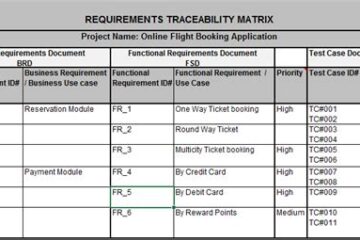What is Cold Solder?
Cold solder, also known as a cold solder joint, is a defective solder connection that occurs when the solder fails to melt and flow properly during the soldering process. This results in a weak, high-resistance connection that may not provide a reliable electrical path between components.
Characteristics of Cold Solder Joints
Cold solder joints exhibit several distinct characteristics:
- Dull, grainy, or porous appearance
- Lack of proper wetting or adhesion to the surfaces being joined
- Visible cracks or gaps in the solder joint
- Rough or uneven surface texture
Causes of Cold Solder Joints
Several factors can contribute to the formation of cold solder joints:
Insufficient Heat
One of the primary causes of cold solder joints is insufficient heat applied during the soldering process. If the soldering iron temperature is too low or the heat is not applied long enough, the solder may not melt completely, resulting in a poor connection.
Contaminated Surfaces
Dirty or oxidized surfaces can prevent the solder from properly wetting and adhering to the components. Contaminants such as dirt, grease, or oxidation can create a barrier between the solder and the surfaces being joined, leading to cold solder joints.
Incorrect Solder Composition
Using the wrong type of solder or a solder with an incorrect alloy composition can also cause cold solder joints. Some solder alloys have higher melting points or require specific temperature ranges for proper flow and wetting.
Inadequate Flux
Flux is essential for removing oxides and promoting solder flow. If there is insufficient flux or the flux is of poor quality, it can result in cold solder joints. The lack of proper fluxing can prevent the solder from adequately wetting the surfaces.
Mechanical Movement
If the components being soldered are moved or disturbed during the cooling process, it can disrupt the solder joint formation and cause cold solder joints. Mechanical movement can create cracks or gaps in the solder, weakening the connection.
Identifying Cold Solder Joints
Identifying cold solder joints is crucial for ensuring the reliability and performance of electronic assemblies. Here are some methods for detecting cold solder joints:
Visual Inspection
A visual examination of the solder joints can often reveal cold solder joint characteristics. Look for:
– Dull, grainy, or porous appearance
– Visible cracks, gaps, or voids in the solder
– Rough or uneven surface texture
– Lack of proper wetting or adhesion to the surfaces
Continuity Testing
Performing continuity tests using a multimeter can help identify high-resistance or open connections caused by cold solder joints. Check for continuity between the intended connection points and look for any abnormal resistance values.
X-Ray Inspection
For high-density or multi-layer assemblies, X-ray inspection can be used to detect cold solder joints that are not visible from the surface. X-ray images can reveal voids, cracks, or incomplete solder flow within the joints.

Preventing Cold Solder Joints
Preventing cold solder joints is essential for ensuring reliable and robust electronic assemblies. Here are some best practices to minimize the occurrence of cold solder joints:
Proper Soldering Temperature
Ensure that the soldering iron is set to the appropriate temperature for the solder alloy being used. Consult the solder manufacturer’s specifications for recommended temperature ranges. Maintain a consistent and sufficient temperature throughout the soldering process.
Surface Preparation
Clean and prepare the surfaces to be soldered to remove any contaminants, oxides, or debris. Use appropriate cleaning agents and methods, such as isopropyl alcohol or solder flux, to ensure the surfaces are free from impurities.
Flux Selection
Choose the right type of flux for the soldering application. Ensure that the flux is compatible with the solder alloy and the surfaces being joined. Apply an adequate amount of flux to promote proper solder flow and wetting.
Solder Alloy Selection
Select the appropriate solder alloy based on the requirements of the application. Consider factors such as melting temperature, wetting properties, and compatibility with the surfaces being soldered. Use solder alloys that meet industry standards and have the desired composition.
Soldering Technique
Use proper soldering techniques to ensure good solder joint formation. Apply heat to both the component lead and the pad simultaneously, allowing sufficient time for the solder to melt and flow. Avoid excessive heat application, which can damage components or cause solder bridges.
Mechanical Stability
Ensure that the components being soldered are securely held in place during the soldering process. Use fixturing or clamping devices to prevent movement or shifting of the components, especially during the cooling phase.
Fixing Cold Solder Joints
If cold solder joints are detected, they should be repaired to ensure the reliability and functionality of the electronic assembly. Here are the steps to fix cold solder joints:
- Remove the defective solder joint using a desoldering tool, such as a desoldering pump or solder wick.
- Clean the surfaces thoroughly to remove any remaining solder or contaminants.
- Apply fresh solder flux to the surfaces to promote proper solder flow and wetting.
- Reapply solder to the joint using the appropriate soldering iron temperature and technique.
- Ensure that the solder flows smoothly and forms a proper fillet around the component lead and pad.
- Allow the solder joint to cool naturally without any mechanical disturbance.
- Reinspect the repaired solder joint visually and perform continuity tests to verify its integrity.
| Solder Alloy | Melting Range (°C) | Typical Applications |
|---|---|---|
| Sn63/Pb37 | 183 | Through-hole, general-purpose |
| Sn60/Pb40 | 188 | Through-hole, high-reliability |
| Sn96.5/Ag3.5 | 221 | Lead-free, RoHS compliant |
| Sn99.3/Cu0.7 | 227 | Lead-free, wave soldering |
FAQ
-
Q: Can cold solder joints cause intermittent failures?
A: Yes, cold solder joints can cause intermittent failures due to their high resistance and poor electrical connection. Thermal changes or mechanical stresses can cause the joint to temporarily lose contact, resulting in intermittent issues. -
Q: How can I prevent cold solder joints when working with lead-free solder?
A: To prevent cold solder joints with lead-free solder, ensure that you use a higher soldering iron temperature (typically 20-30°C higher than leaded solder), apply sufficient heat to both the component and pad, and use a compatible lead-free flux to promote proper solder flow and wetting. -
Q: Can cold solder joints be detected by automated optical inspection (AOI)?
A: AOI systems can detect some characteristics of cold solder joints, such as surface irregularities or insufficient solder coverage. However, AOI may not be able to identify all types of cold solder joints, especially those hidden beneath components or within multi-layer assemblies. -
Q: Are cold solder joints more common in surface-mount technology (SMT) or through-hole assemblies?
A: Cold solder joints can occur in both SMT and through-hole assemblies. However, they may be more prevalent in SMT due to the smaller component sizes, tighter pin spacing, and the need for precise temperature control and solder paste application. -
Q: Can cold solder joints be prevented by using a higher soldering iron wattage?
A: Using a higher wattage soldering iron alone does not guarantee the prevention of cold solder joints. While sufficient heat is important, factors such as proper technique, surface preparation, flux selection, and solder alloy compatibility also play crucial roles in achieving good solder joint quality.
Conclusion
Cold solder joints are a common issue in electronic assembly that can lead to poor electrical connections, reduced reliability, and device failures. Understanding the causes, identification methods, and prevention techniques for cold solder joints is essential for ensuring the quality and performance of electronic products.
By following best practices such as proper soldering temperatures, surface preparation, flux selection, and soldering techniques, the occurrence of cold solder joints can be minimized. Regular inspection and testing can help identify and repair any cold solder joints that may have formed during the assembly process.
Investing in the right tools, materials, and training for soldering personnel is crucial for maintaining high standards of soldering quality. By adopting a proactive approach to cold solder joint prevention and addressing any issues promptly, manufacturers can enhance the reliability and longevity of their electronic products.



0 Comments